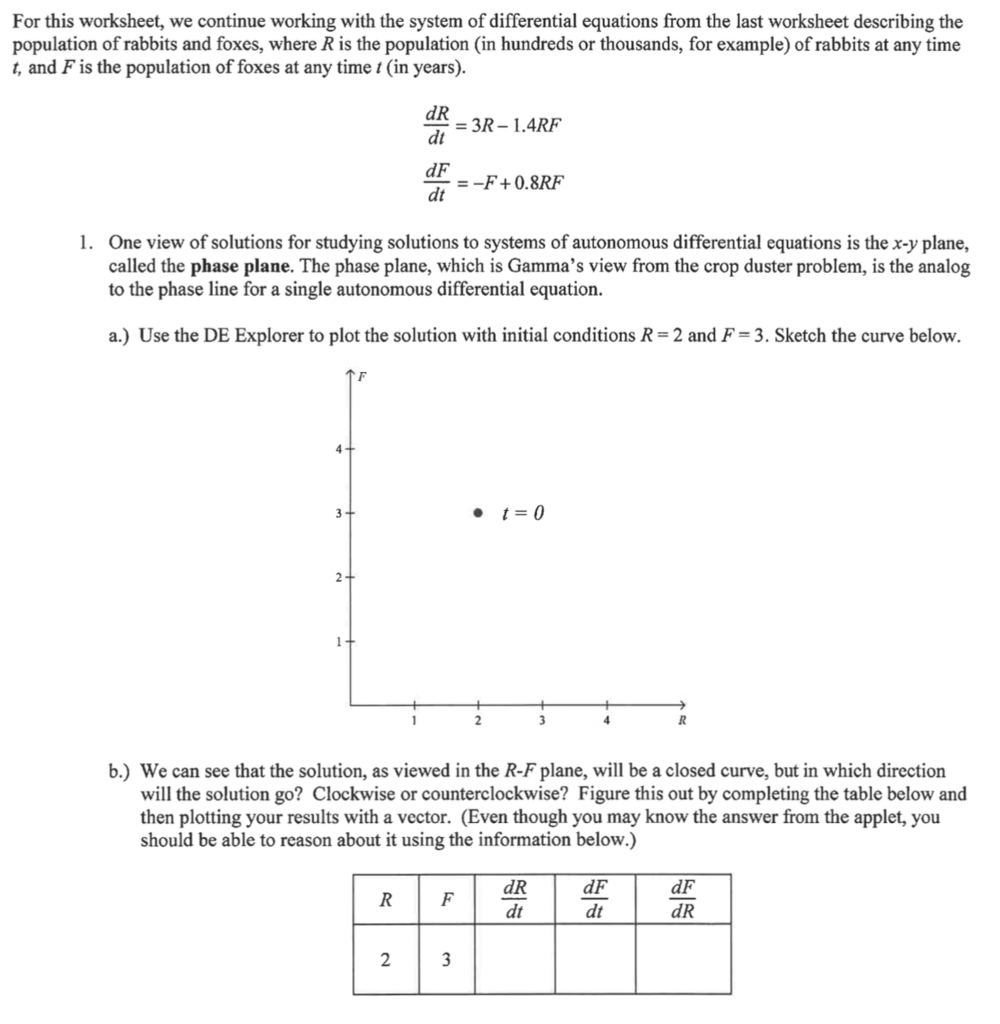Question: For this worksheet, we continue working with the system of differential equations from the last w…

Show transcribed image text For this worksheet, we continue working with the system of differential equations from the last worksheet describing the population of rabbits and foxes, where R is the population (in hundreds or thousands, for example) of rabbits at any time t, and Fis the population of foxes at any time t (in years). dR dt d+0.8RF One view of solutions for studying solutions to systems of autonomous differential equations is the x-y plane, called the phase plane. The phase plane, which is Gamma's view from the crop duster problem, is the analog to the phase line for a single autonomous differential equation. 1. a.) Use the DE Explorer to plot the solution with initial conditions R-2 and F-3. Sketch the curve below. b.) We can see that the solution, as viewed in the R-F plane, will be a closed curve, but in which direction will the solution go? Clockwise or counterclockwise? Figure this out by completing the table below and then plotting your results with a vector. (Even though you may know the answer from the applet, you should be able to reason about it using the information below.) dR dt dF dt dF dR 2
For this worksheet, we continue working with the system of differential equations from the last worksheet describing the population of rabbits and foxes, where R is the population (in hundreds or thousands, for example) of rabbits at any time t, and Fis the population of foxes at any time t (in years). dR dt d+0.8RF One view of solutions for studying solutions to systems of autonomous differential equations is the x-y plane, called the phase plane. The phase plane, which is Gamma's view from the crop duster problem, is the analog to the phase line for a single autonomous differential equation. 1. a.) Use the DE Explorer to plot the solution with initial conditions R-2 and F-3. Sketch the curve below. b.) We can see that the solution, as viewed in the R-F plane, will be a closed curve, but in which direction will the solution go? Clockwise or counterclockwise? Figure this out by completing the table below and then plotting your results with a vector. (Even though you may know the answer from the applet, you should be able to reason about it using the information below.) dR dt dF dt dF dR 2

